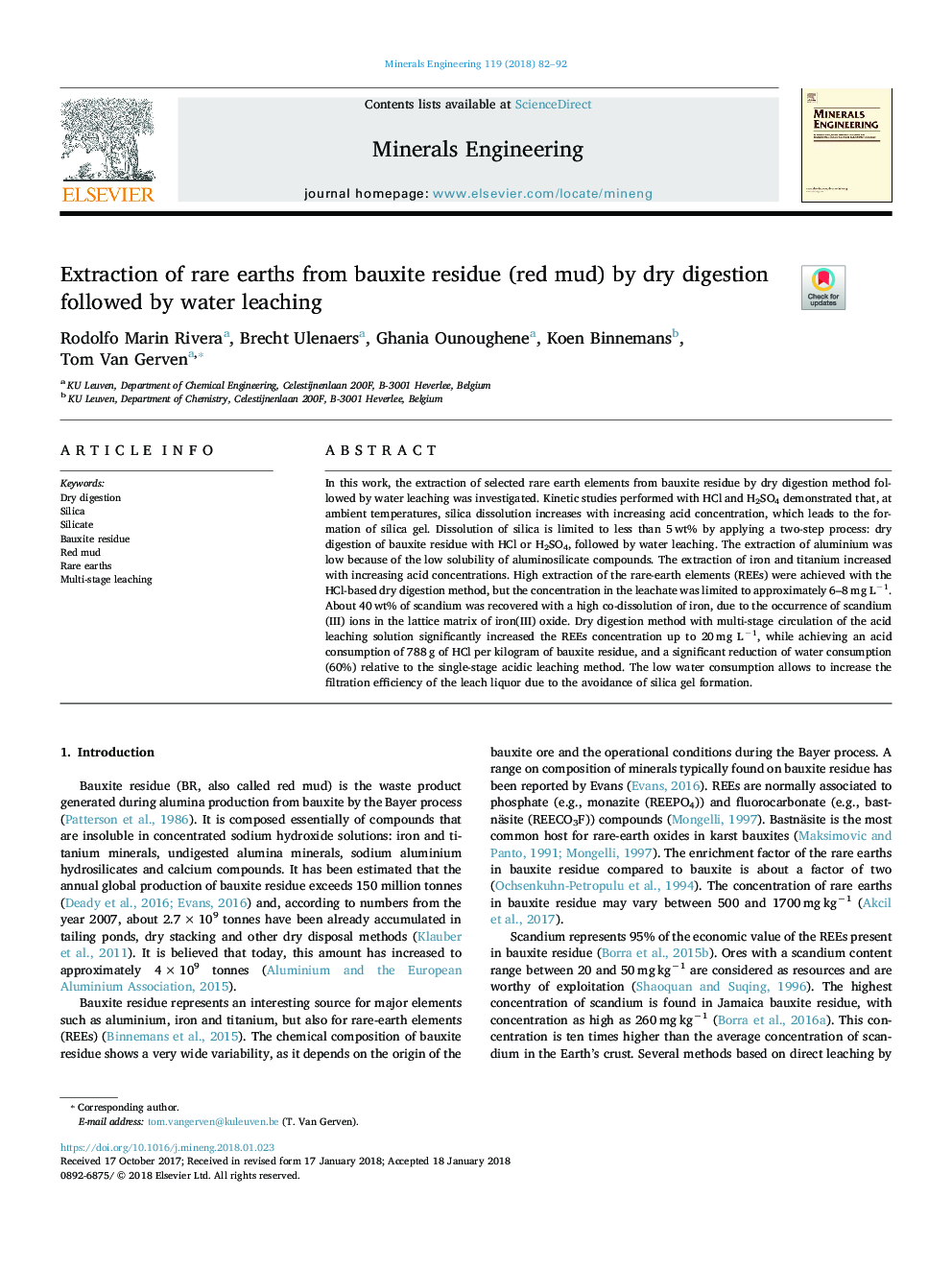| Article ID | Journal | Published Year | Pages | File Type |
|---|---|---|---|---|
| 6672489 | Minerals Engineering | 2018 | 11 Pages |
Abstract
In this work, the extraction of selected rare earth elements from bauxite residue by dry digestion method followed by water leaching was investigated. Kinetic studies performed with HCl and H2SO4 demonstrated that, at ambient temperatures, silica dissolution increases with increasing acid concentration, which leads to the formation of silica gel. Dissolution of silica is limited to less than 5â¯wt% by applying a two-step process: dry digestion of bauxite residue with HCl or H2SO4, followed by water leaching. The extraction of aluminium was low because of the low solubility of aluminosilicate compounds. The extraction of iron and titanium increased with increasing acid concentrations. High extraction of the rare-earth elements (REEs) were achieved with the HCl-based dry digestion method, but the concentration in the leachate was limited to approximately 6-8â¯mg Lâ1. About 40â¯wt% of scandium was recovered with a high co-dissolution of iron, due to the occurrence of scandium(III) ions in the lattice matrix of iron(III) oxide. Dry digestion method with multi-stage circulation of the acid leaching solution significantly increased the REEs concentration up to 20â¯mg Lâ1, while achieving an acid consumption of 788â¯g of HCl per kilogram of bauxite residue, and a significant reduction of water consumption (60%) relative to the single-stage acidic leaching method. The low water consumption allows to increase the filtration efficiency of the leach liquor due to the avoidance of silica gel formation.
Related Topics
Physical Sciences and Engineering
Chemical Engineering
Chemical Engineering (General)
Authors
Rodolfo Marin Rivera, Brecht Ulenaers, Ghania Ounoughene, Koen Binnemans, Tom Van Gerven,
